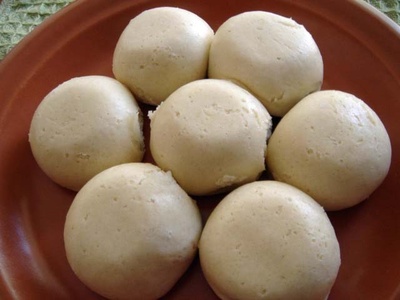Round, and filled with that oh-so-sweet red bean paste. That’s the Japanese treat, manju . Brazilians know it as “doce de feijon ”.
Here’s a story I heard from my mom. It was over 80 years ago. She was living in Shiteio at the time.
One day, a customer from out of town visited. It was another Japanese-Brazilian, bearing an unusual gift: manju .
The kids hung up the broom upside down behind the door. It was an old spell for making visitors leave quickly.
And at last, the visitor left – and the kids headed straight for the manju !
Each manju was divided up into 4 pieces. My mom was one of 10 kids, so the children weren’t able to enjoy a whole manju on their own. That manju was the only snack for that day.
I was a single child, and able to eat a whole manju …or two…or as many as I wanted. However, after hearing that story, manju tasted a little different to me.
Even now when I see a whole manju , I recall that story I heard from my mother. They may have been poor, but what an alive and vibrant family my mom had. It really moves me, and even brings a tear to my eye at times.
No matter how many decades pass, I never forget the taste of manju . It’s a “flavor” I’ll always have a soft spot for.
© 2011 Laura Honda-Hasegawa






